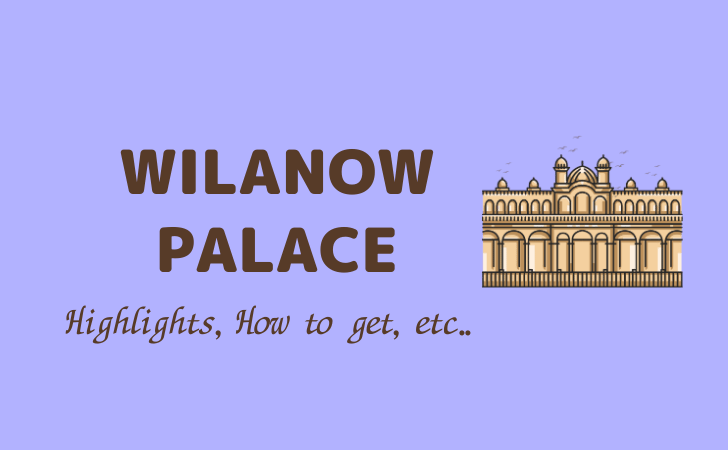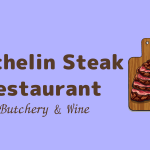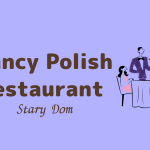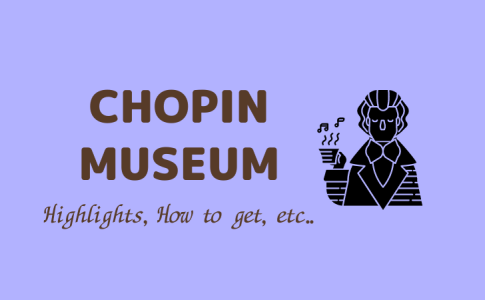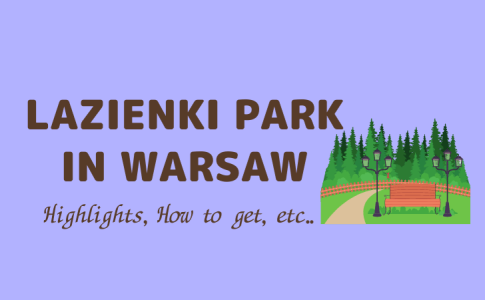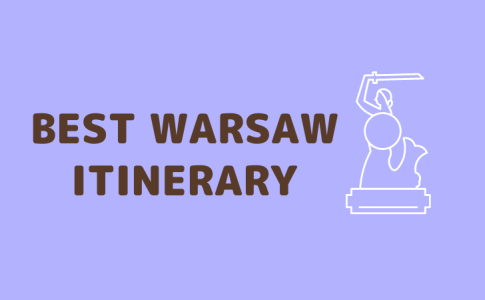
located on the outskirts of Warsaw, about a 30-minute drive from downtown Warsaw.
Vilanów Palace
I went to the
Vilanów Palace is also known as the “Polish Palace of Versailles.
The palace is filled with luxurious furnishings and artwork, and its splendor is overwhelming.
This article provides an overview of the Villaneuf Palace, its history, how to get there, hours of operation, and other basic information.
You can see what it was like when I actually visited here.
Please read on if you like, as I have included more photos to convey the luxurious atmosphere of the palace.
<Link in preparation
What is Vilanuf Palace? Overview & History
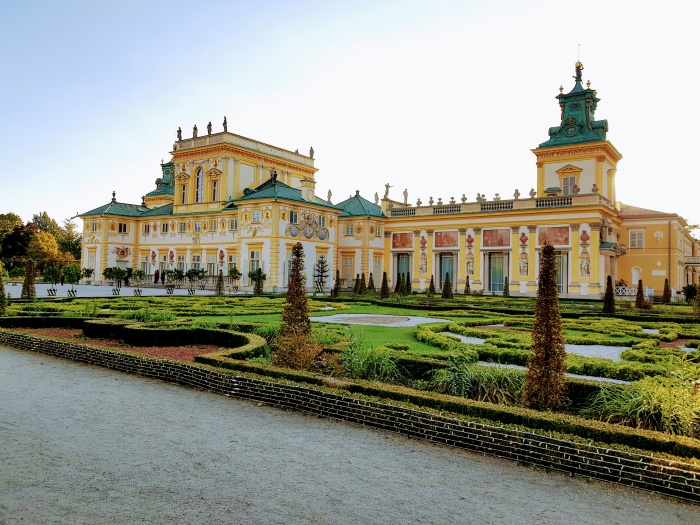
The Vilanów Palace was built in
Summer residence of King Jan III Sobieski of Poland
Construction began in 1677 and was completed in 1696 as the
It was opened to the public as Poland’s first museum in 1805, and visitors can see furniture and artifacts from Europe and Asia.
Who is Jan III Sobieski?
King Jan III Sobieski of Poland, who is completely unfamiliar to the Japanese .
You will enjoy your visit to the Villaneuf Palace more if you know a little about his history.
(I’m not interested in history! (If you’re not interested in history, jump to the highlights of Vilanuf Palace!)

Jan III was King of Poland, but he was more than that.
He was a hero who saved Europe.
In the 17th century, Poland was ravaged by war with its neighbors.
The first one to show up was, yes, Jan III.
Jan III led the Polish army to victory in one battle after another.
After an impressive victory against the powerful Ottoman Empire, Jan III became King of Poland.
At that time, the greatest enemy of the European nations was the Ottoman Empire, an Islamic state.
The Ottoman Empire, with its capital in present-day Turkey, was expanding its area of control by buoyantly marching into Asia, Africa, and Europe.
In 1683, the Ottoman Empire led a 150,000-strong army to besiege Vienna in neighboring Austria.
After his victories in the war against the Ottoman Empire, Jan III was asked to “Save Vienna!” was asked to “Save Vienna!
Vienna was on the verge of falling after months of fighting with a large army of about 150,000 men.
Then Jan III came to the rescue!
The army of 30,000 led by King Jan III won the battle against the 150,000 strong army in just one hour!
The Ottoman Empire quickly declined following its defeat in this battle, and the European nations were spared from Ottoman domination.
Kings and popes from all over Europe congratulated Jan III on his victory.
Jan III became a hero when he defended the Christian world of Europe against the rule of the Ottoman Empire, an Islamic state.
Congratulations, congratulations.
It did not end there.
His life then began a downward spiral.
We found ourselves spending too much money and time fighting the Ottoman Empire.
Politics and finances in Poland deteriorated out of control.
The Ottoman Empire was in the midst of a war.
Poland, which had been undermined by its neighbors, began to decline.
Jan III lost his presence at home and abroad.
In his later years, suffering from a chronic heart attack, he lived quietly in the Villaneuf Palace.
Jan III and the Vilanuf Palace
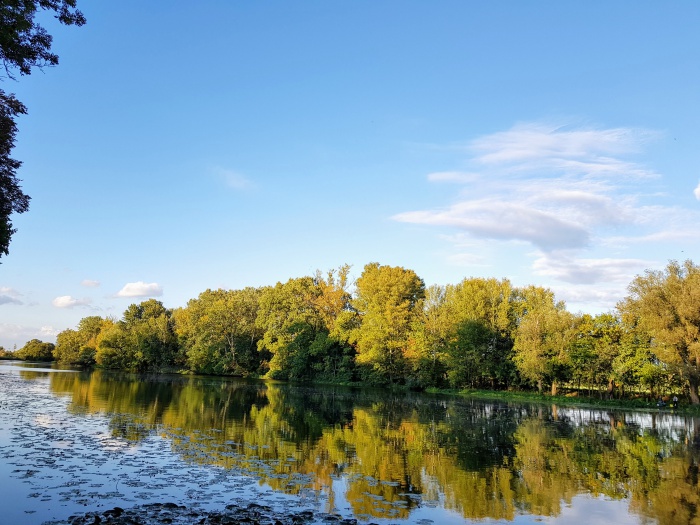
Born and raised in the suburbs of Poland, Jan III built the Vilanów Palace on the outskirts of Warsaw.
Wishing for a place to relax in nature, away from Warsaw city center from time to time
He built the Vilanów Palace on the outskirts of Warsaw.
Jan III and his wife Maria Kazimiera were very fond of the Villaneuf Palace.
Jan III loved the arts and sciences.
In the palace, you can see his collection of furniture, clocks, and works of art.
3 Highlights of Vilanuf Palace
Here are three must-see attractions when you visit Vilanuf Palace.
This is royalty! Luxurious Furniture & Decor
The glittering furnishings and decorations are a must-see, and offer a glimpse into the luxurious life of King Jan III at the time he lived.
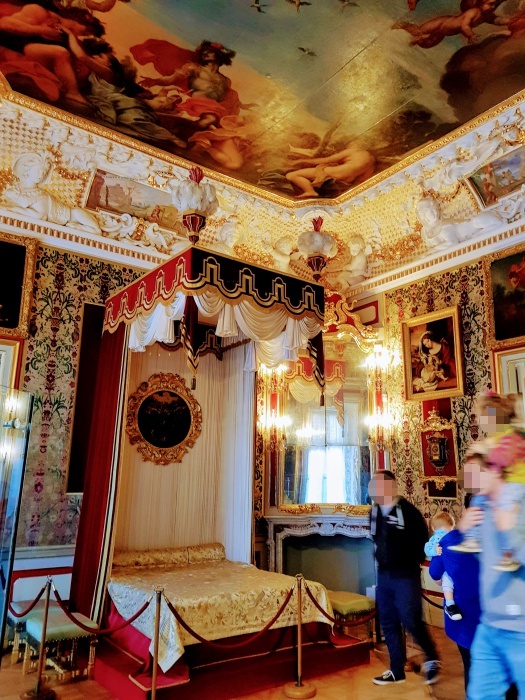
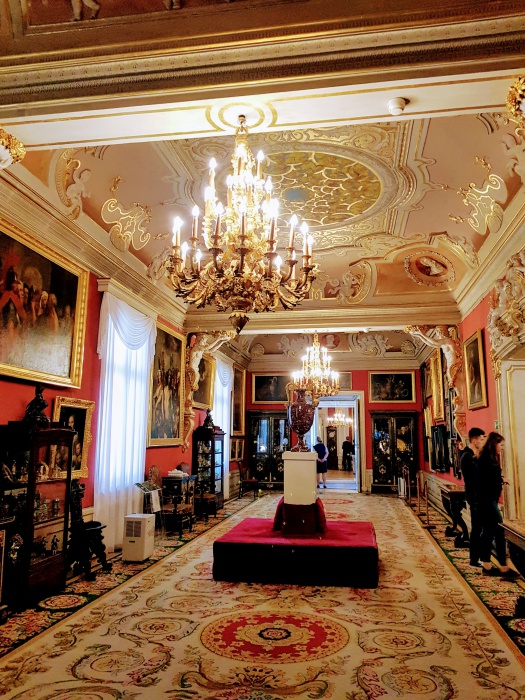
Antique “Secret Bookshelf”
This is what got me personally excited. The secret bookshelf.
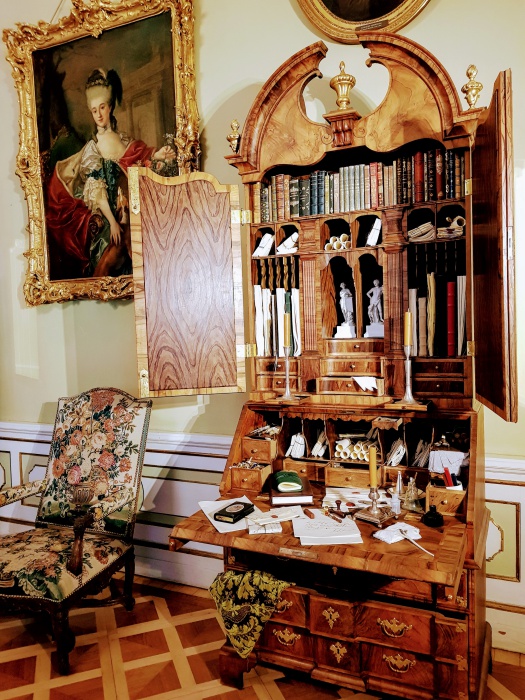
It’s pretty enough to look at on its own.
There are even more exciting tricks.
The letters can be hidden in places where they are not visible at first glance.
I want ^^.
No longer art! A garden that changes its expression with each season
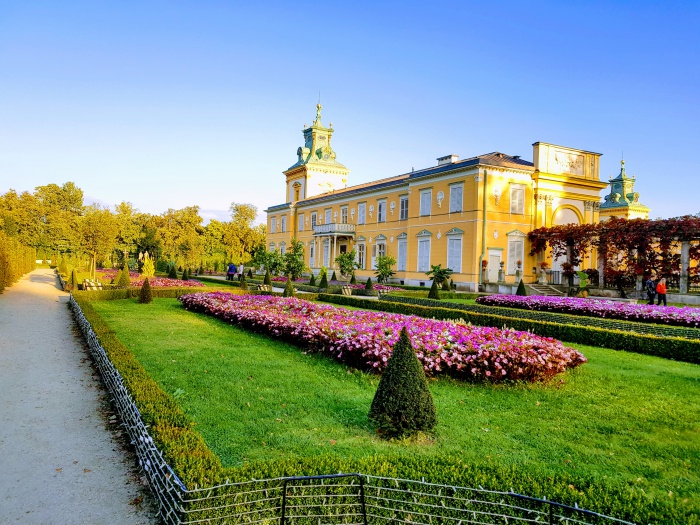
Don’t miss the well-maintained, artistic garden.
Artistic gardens like the Palace of Versailles, gardens with seasonal flowers, a rose garden and a lake that looks like a river.
You can enjoy the rich variety of nature at your leisure.
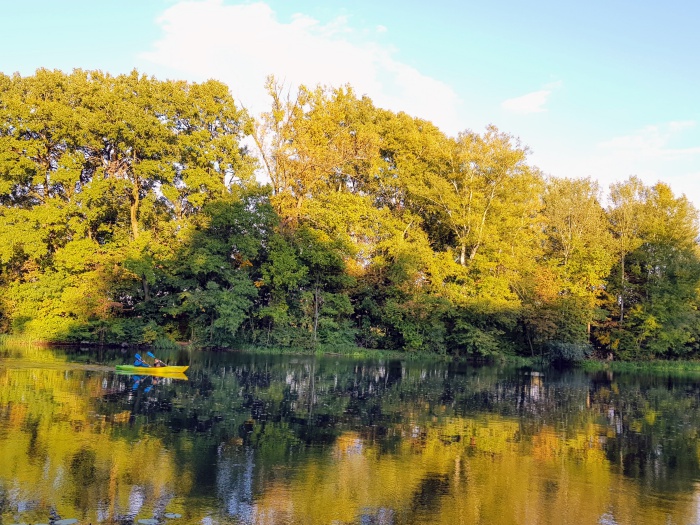
Basic Information] Directions to Villaneuf Palace, hours of operation, holidays, and ticket prices
Address: Stanisława Kostki Potockiego 10/16, 02-958 Warszawa
The official name of the Vilanów Palace is “Muzeum Pałacu Króla Jana III w Wilanowie”. It means “Palace Museum of King Jan III in Vilanów.
How to go by bus
No. 116, No. 180, or No. 519. Take a bus and get off at the bus stop “Wilanów”.
After getting off the bus stop, it is about a 10-minute walk to the palace.
You can take any bus without transferring.
From Warsaw Central Station
Bus No. 519 is convenient. Approx. 30 min.
From the direction of the Old Town
Buses 116 and 180 are convenient. Approx. 35 min.
Please note that buses 116 and 180 have different routes on weekdays and holidays.
Shinsegae Street is not a street on holidays.
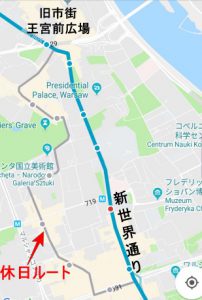
How to get there by metro or streetcar
There is no direct way to get there, and you will need to transfer to a bus on the way.
We recommend that you take the bus because you can get there without changing buses.
Hours of Operation and Days Closed
Information as of October 2018.
Please check the official website for the latest information when you go out.
Official HP
https://www.wilanow-palac.pl/
Palace Hours and Closing Days
[table id=”1″ /]closed day
- Tuesdays in winter
- Easter (Good Friday, Holy Saturday and Easter Sunday)
Dates change every year.
March 30 – April 1, 2018 - Eucharist (Corpus Christi)
The date changes every year.
May 31 in 2018 - 8/15 Assumption of Mary
- 11/1 All Saints’ Day)
- All second half of December (12/15 – 12/31 in 2018)
Garden Hours and Closing Days
[table id=”2″ /]closed day
None.The park may be temporarily closed during high winds.
Approximate duration of stay in palaces and gardens
Inside the palace: 30 minutes to 1 hour
Garden: 30 minutes to 1 hour
Ticket Price
[table id=”3″ /]There are two main types of tickets for the Palace.
ROUTE 1 is only the first floor, while ROUTE 1+ 2 offers access to the entire exhibit.
You can see the luxurious furniture and decorations of “The European Palace” in ROUTE1 and
Add ROUTE 2 to that and you can see Asian furnishings and a variety of hunting weapons used by Yang III.
Personally, I think ROUTE 1 is enough for a tourist visit.
You can read about ROUTE2 in the article I wrote about my visit.
If you are interested, please take a look ↓↓↓
<Link in preparation
Free Admission Day
Free Admission Day
On free days, it may be crowded and admission times may be limited.
If you want to get around efficiently, it is best to avoid this area.
What to expect when visiting Vilanuf Palace
Here are some things you should know before visiting Vilanuf Palace.
The ticket office is far in front of the palace.
The ticket office is not located near the entrance to the palace, but much further forward.
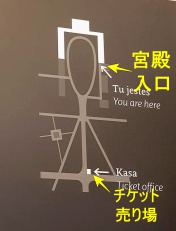
Find the yellow hut and purchase in advance.
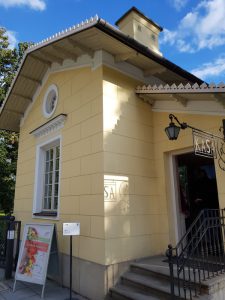
Always check your backpack.
You are not allowed to enter the palace with a backpack on your back. (Gardens are allowed.)
There is a cloakroom and lockers next to the turnstiles to enter the palace, so leave your belongings in one of them.
Both
Free
are.
Lockers require 2 zloty coins. (They will be returned after use).
Restrooms are in front of lockers before the entrance gate
There are no restrooms after passing through the entrance gates.
Restrooms are located in front of the lockers near the entrance gates.
There is a free commentary app.
The Villaneuf Palace has an official app.
While touring the palace, visitors can use the app to read and listen to explanations of the exhibits.
Click here to download the app.
The only drawback is that it is in English, not Japanese.
Since it is free, I recommend this rather than renting an audio guide.
(Audio guide is 10 zloty. No Japanese)
There is a QR code near the exhibits, which can be read to get an explanation.
However, the commentary is quite lengthy.
Too much information to read…
It’s tough because I have to listen to English…
I gave up reading halfway through ^^;
summary
How was it?
The Villa Neuf Palace is a luxurious palace and a relaxing garden, both of which can be enjoyed at once.
It is a bit far from Warsaw city center, but it is worth the trip.

In researching Jan III for this article, a question occurred to me.
I must have studied world history, but the name Jan III doesn’t sound familiar at all…”
This is despite the fact that I had studied world history intensely for my college entrance exams.
Funny.
Even though it was more than 10 years ago, it should be in the corner of your memory.
Even though I vaguely remembered the word “siege of Vienna” in which he was active.
When I pull out my world history textbook and look at the “ya” line in the index, his name is not there.
When I looked at the Vienna Siege page, there is only one line that simply states.
The Ottoman Empire (among others) expanded its territory in the 16th century, but the failure of the Second Siege of Vienna (1683) was the catalyst for a shift from territorial expansion to contraction.”
Ah, poor Jan III.
His activities, which were praised as heroic, were completely cut out of the story.
I’m sure they use quite a few pages to teach in Poland.
The great Japanese figures that everyone knows would probably be almost unknown if the country were changed.
It’s kind of interesting.

